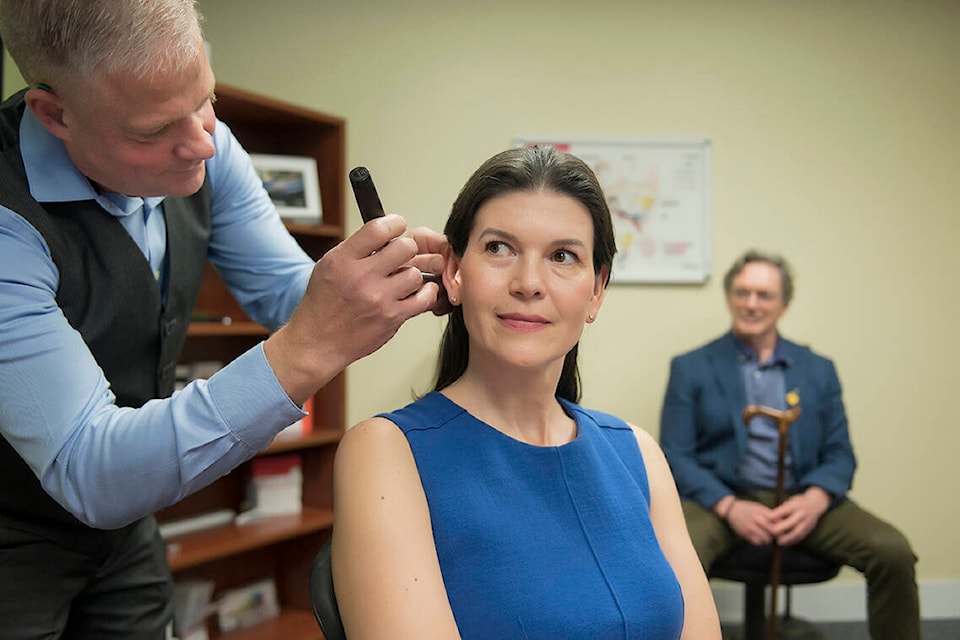A few weekends ago Hanan Merrill was at a trade show and a gentleman stopped by his Nanaimo Hearing Clinic booth. The gentleman was wearing hearing aids, and was clearly frustrated with their performance — especially in the trade show environment where a cacophony of background noise made it very hard to have a conversation.
“Why can’t hearing aids separate background noise from speech?” the gentleman asked. “It’s a constant struggle, especially in an environment with all these people. I just can’t figure out how to make my hearing aids work better.”
Hanan gets this question a lot. We can put people on the moon, we can carry a supercomputer in the palm of our hand, and we’ve even invented noise-cancelling headphones. So why can’t hearing aids cancel noise the same way?
“It’s typically it’s the brain’s job to separate sounds we want to hear from sounds we don’t. When we’re younger with healthy, full-range hearing and a brain that works really fast, we’re able to focus on one sound and ignore others. It’s not that those sounds go away, it’s just that our brain is able to decide, ‘I’m not paying attention to that, I’m paying attention to the speech,’” Hanan says.
When a person has hearing loss, the brain doesn’t receive all the sounds it needs. Our modern solution is to wear a hearing aid, which gives the brain many sounds it’s been missing. Problem solved, right?
“When a person experiences hearing loss, the quality of the auditory system is broken down. So even though hearing aids give the brain more sound, they don’t always give the necessary quality of sound. Furthermore, as we age our brain processing power isn’t as fast as it used to be, so it struggles to make sense of this very complicated sound ‘picture.’”
How noise-cancelling headphones work, and why hearing aids have a harder job
High quality noise-cancelling headphones only cost a few hundred dollars, but hearing aids cost thousands. Why the discrepancy?
“It comes down to how mixed up the sound is. The job of noise-cancelling headphones is actually quite easy — they block out everything. High-tech versions use a microphone to ‘listen’ to all the sounds coming in and broadcast a backwards or ‘inverted’ sound wave to cancel that sound — all of it,” Hanan says. “Then the headphones pipe in the music or movie audio that you want to hear. But note: that sound isn’t being selected from your surroundings. It’s coming from a different source, like your smartphone or mp3 player.”
At a crowded trade show, the sounds we want to hear and the sounds we don’t want to hear are all mixed together, making it much more difficult to cancel out the noise.
“People with hearing loss still have options. They’re not all perfect and some of them take effort, but there are solutions!”
Next month in the Nanaimo News Bulletin, Hanan will share some of those solutions! Don’t want to wait that long? Call 250-585-4100 or get in touch online at nanaimohearingclinic.com/contact to make an appointment at Nanaimo Hearing Clinic today. Find the clinic at 501-5800 Turner Rd in Cactus Club Plaza.
